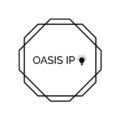Copyright protection is granted for literal and artistic works. Copyright protection is automatic, meaning that creators need not apply for registration before enjoying and enforcing their rights in copyright. However, registration is highly recommended.
Industrial design protection is granted for aesthetic and ornamental aspects of a product. Simply put, industrial design protection is granted for the appearance of a product or a work. The elements that might be eligible for industrial design protection range from shapes, patterns, colors, etc.
A design can be artistic, making it eligible for copyright and industrial design protection. Because of this conundrum, creators often must choose between seeking protection under design law or copyright in some jurisdictions.
Whether one can obtain copyright and industrial design protection for the same work/design varies by jurisdiction. Understanding the country’s laws where registration is sought before deciding which route to seek protection is essential, especially in jurisdictions where one cannot obtain dual protection under both regimes.
The Copyright-Design overlap in Uganda:
In Uganda, the Industrial Property Regulations 2017 address the copyright-design overlap. Regulation 45 states that, “an industrial design is not registrable if protected under the Copyright and Neighboring Rights Act“. This means that copyright and design protection in Uganda are mutually exclusive. If one has registered a work under the Copyright and Neighboring Rights Act (CNRA), they cannot seek to register the same work under the industrial design law. Therefore, it is not possible to have dual protection under design and copyright laws for a work of art (or design) in Uganda.
Since copyright protection is automatic, the automatic copyright protection for the work ceases if a creator has not registered their work under the CNRA and opts to register the same work under the industrial design law. Upon registration under the industrial design law, the design will be subjected to the criteria and formalities of protection for designs. In addition, the term of protection will expire after 15 years, after which the design will fall into the public domain, free to be exploited by anyone.
What is essential to consider before choosing the route to seek IP protection in such instances; are the differences between the two forms of protection, the benefits of either form of protection, and the registration costs. In addition, all these considerations must be weighed against the business strategy and objectives to ensure that the protection sought benefits the business.


